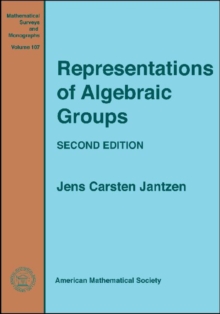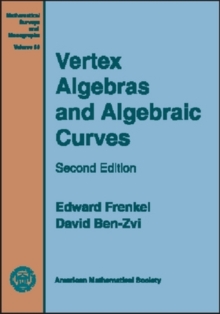
Continuous Cohomology, Discrete Subgroups, and Representations of Reductive Groups Paperback / softback
by A. Borel, N. Wallach
Part of the Mathematical Surveys and Monographs series
Paperback / softback
Description
The book by Borel and Wallach is a classic treatment of the use of cohomology in representation theory, particularly in the setting of automorphic forms and discrete subgroups.
The authors begin with general material, covering Lie algebra cohomology, as well as continuous and differentiable cohomology.
Much of the machinery is designed for the study of the cohomology of locally symmetric spaces, realized as double coset spaces, where the quotient is by a maximal compact subgroup and by a discrete subgroup.
Such spaces are central to applications to number theory and the study of automorphic forms.
The authors give a careful presentation of relative Lie algebra cohomology of admissible and of unitary $G$-modules.
As part of the general development, the Langlands classification of irreducible admissible representations is given.
Computations of important examples are another valuable part of the book. In the twenty years between the first and second editions of this work, there was immense progress in the use of homological algebra to construct admissible representations and in the study of arithmetic groups.
The second edition is a corrected and expanded version of the original, which was an important catalyst in the growth of the field.
Besides the fundamental material on cohomology and discrete subgroups present in the first edition, this edition also contains expositions of some of the most important developments of the two intervening decades.
Information
-
Available to Order - This title is available to order, with delivery expected within 2 weeks
- Format:Paperback / softback
- Pages:260 pages
- Publisher:American Mathematical Society
- Publication Date:30/11/2013
- Category:
- ISBN:9781470412258
Information
-
Available to Order - This title is available to order, with delivery expected within 2 weeks
- Format:Paperback / softback
- Pages:260 pages
- Publisher:American Mathematical Society
- Publication Date:30/11/2013
- Category:
- ISBN:9781470412258










